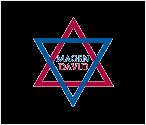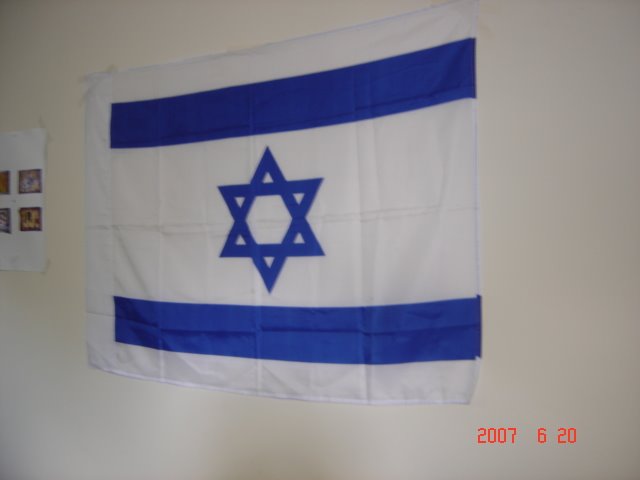Tuesday, August 29, 2006
David
Rabino Dr. Meir Levin
The book of Ruth closes with David. Who is not inspired by the story of David with its pathos and emotion, his trials and triumphs, his peaks of religious fervor and the very human failings and disappointments? In many ways it is the story that resembles that of Ruth, a tale of rejection and perseverance, incessant effort and moral decisions, and always choices, choices, choices. Moral perfection is a matter of choices and the same options present themselves anew in every epoch. The birth of David closes the era when “judges judged” for it opens the new period of national tribulations, the Monarchy.
By now we have become familiar with the view that history is built out of repetition. In every generation we storm the same peaks and agonize over the same questions and dilemmas, the same quandaries and doubts. Every generation takes the same exam, but if it passes, its children traverse the same terrain at a higher elevation.
The central moral issue of the period of the Judges had been how to preserve the uniqueness and purity of Israelite religion in the midst of the surrounding nations. The story of Ruth demonstrates that they ultimately succeeded in being able to absorb, transform and reshape outside influences under the authority and sovereignty of the Torah. So successful were they that Ruth, the Moabite maiden became the Mother of Royalty. Her son David represents the state of religious and spiritual maturity, able to reject the bad and transform the good. Henceforth, the Jewish people shall never again be tempted to assimilate and disappear
among its neighbors. Its struggle will now be wholly internal – how to unify the disparate aspects of the Holy, how to assure that Divine Presence rests upon it and remains at its central point, how to build the Holy Temple in Jerusalem so as to remain united in one worship, under one banner, under one Torah. The failing of the Monarchy was separation into two kingdoms; its eventual fall came directly from that. Disunity destroyed the first Temple and it also led to the ruin of the Second Temple.
David and his children continued to be tempted but significantly , within and around, not outside of marriage. We never again see a situation like that of Judah and Tamar or Ruth and Boaz. David and Bathseva, Amnon and Tamar, Avshalom and his father’s wives, Adoniyahu and Avishag, Solomon and the daughter of Pharaoh – all these were solely errors on the part of men and in regard to the marriage relationship. Marriage became the paradigm of the greater struggle for the heart and soul of the monarchy. Tikun is now primary and Birur is secondary to it; rectification and unification is the main aspiration, even if separation of evil from good and purification of good out of evil still has its place.
David represents a way-station on the way to Redemption. In some ways he succeeds and in others, he and his descendents fail. They work continues. The redemptive process continues – may we soon witness its completion, speedily and in our day.
The book of Ruth closes with David. Who is not inspired by the story of David with its pathos and emotion, his trials and triumphs, his peaks of religious fervor and the very human failings and disappointments? In many ways it is the story that resembles that of Ruth, a tale of rejection and perseverance, incessant effort and moral decisions, and always choices, choices, choices. Moral perfection is a matter of choices and the same options present themselves anew in every epoch. The birth of David closes the era when “judges judged” for it opens the new period of national tribulations, the Monarchy.
By now we have become familiar with the view that history is built out of repetition. In every generation we storm the same peaks and agonize over the same questions and dilemmas, the same quandaries and doubts. Every generation takes the same exam, but if it passes, its children traverse the same terrain at a higher elevation.
The central moral issue of the period of the Judges had been how to preserve the uniqueness and purity of Israelite religion in the midst of the surrounding nations. The story of Ruth demonstrates that they ultimately succeeded in being able to absorb, transform and reshape outside influences under the authority and sovereignty of the Torah. So successful were they that Ruth, the Moabite maiden became the Mother of Royalty. Her son David represents the state of religious and spiritual maturity, able to reject the bad and transform the good. Henceforth, the Jewish people shall never again be tempted to assimilate and disappear
among its neighbors. Its struggle will now be wholly internal – how to unify the disparate aspects of the Holy, how to assure that Divine Presence rests upon it and remains at its central point, how to build the Holy Temple in Jerusalem so as to remain united in one worship, under one banner, under one Torah. The failing of the Monarchy was separation into two kingdoms; its eventual fall came directly from that. Disunity destroyed the first Temple and it also led to the ruin of the Second Temple.
David and his children continued to be tempted but significantly , within and around, not outside of marriage. We never again see a situation like that of Judah and Tamar or Ruth and Boaz. David and Bathseva, Amnon and Tamar, Avshalom and his father’s wives, Adoniyahu and Avishag, Solomon and the daughter of Pharaoh – all these were solely errors on the part of men and in regard to the marriage relationship. Marriage became the paradigm of the greater struggle for the heart and soul of the monarchy. Tikun is now primary and Birur is secondary to it; rectification and unification is the main aspiration, even if separation of evil from good and purification of good out of evil still has its place.
David represents a way-station on the way to Redemption. In some ways he succeeds and in others, he and his descendents fail. They work continues. The redemptive process continues – may we soon witness its completion, speedily and in our day.




